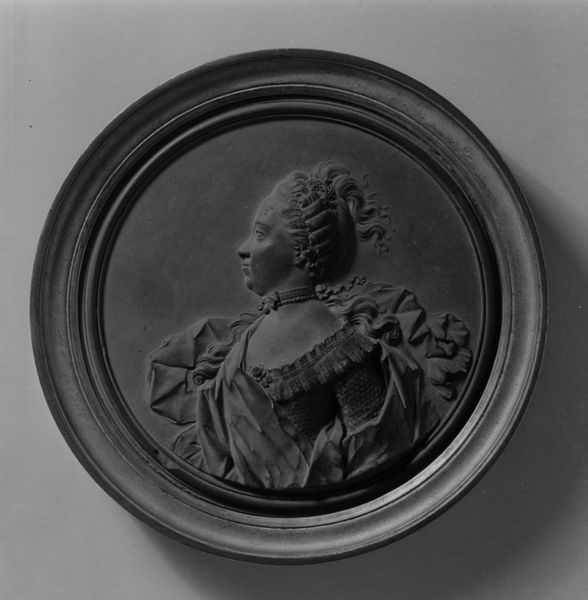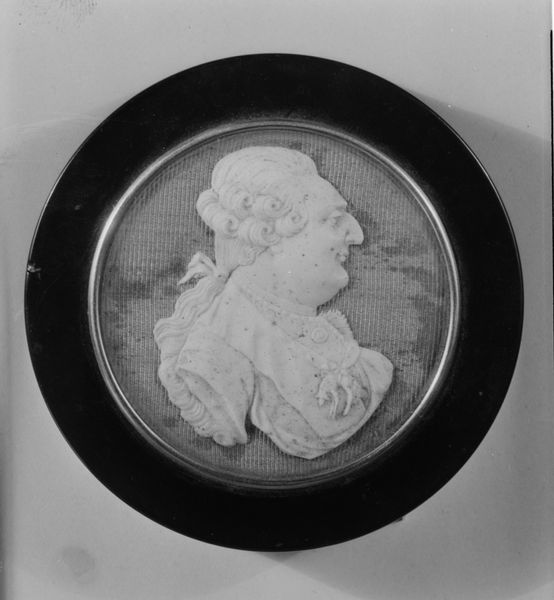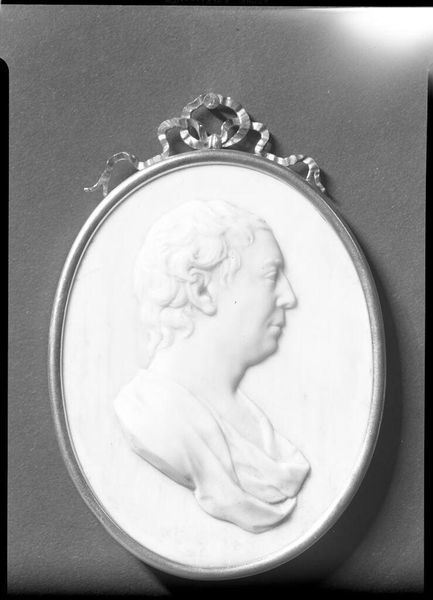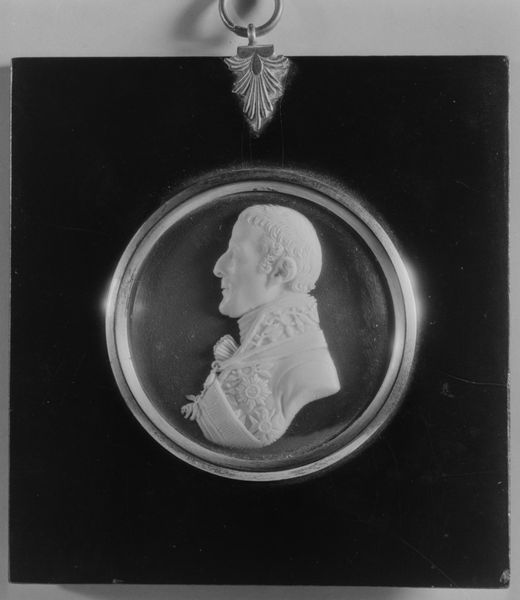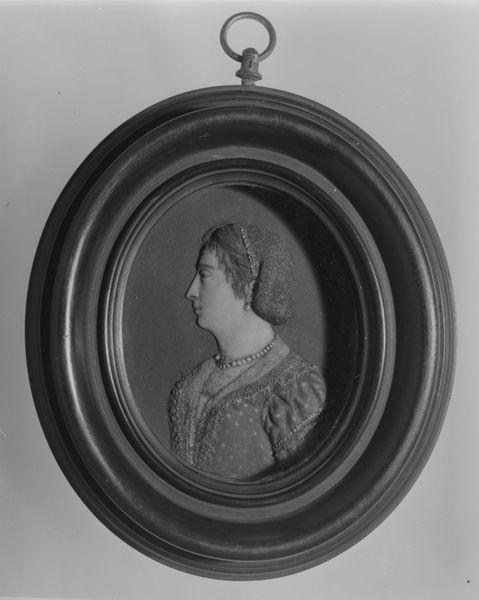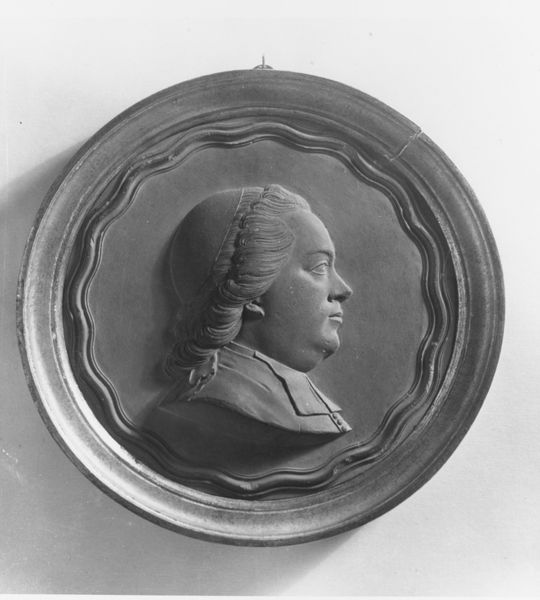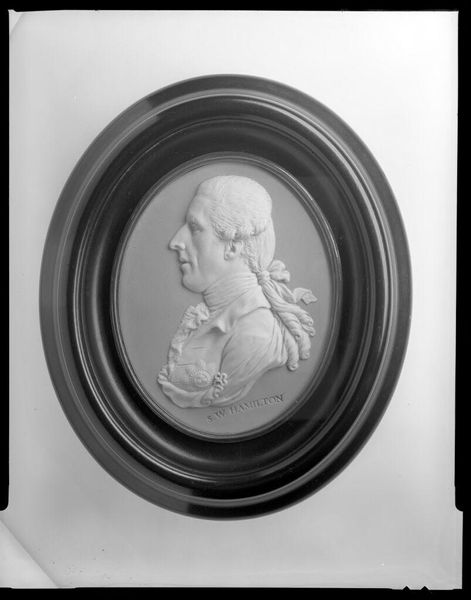
Portrait of Madame de Faugnes, dame de Thauvenay 1750 - 1786
0:00
0:00
relief, sculpture, marble
#
sculpture
#
relief
#
sculpture
#
decorative-art
#
marble
#
profile
#
rococo
Dimensions: Diameter: 6 1/4 in. (15.9 cm)
Copyright: Public Domain
Curator: Immediately striking, isn't it? The sharp, almost severe profile, set against the intricate details of the dress and frame. Editor: It is quite stunning. We're looking at "Portrait of Madame de Faugnes, dame de Thauvenay," a marble relief sculpture created between 1750 and 1786 by Jean-Baptiste Nini. Curator: The precision Nini achieved working with marble here is astounding, turning what could have been a purely representational portrait into a social commentary about status, consumption, and labor during the Rococo period. The detail in Madame's dress indicates a lot about the work of anonymous makers. Editor: Precisely. A piece like this tells us much about 18th-century French aristocracy, power dynamics, and societal expectations. The unflinching profile view and elaborate adornments convey not just wealth, but also a carefully constructed public image. Curator: Yes! The scale, seemingly meant for private consumption versus public display, hints at the nature of patronage during that era. We have to consider how these artworks functioned within networks of power and prestige. Where and by whom was this actually seen? Editor: Consider the role of women like Madame de Faugnes—power brokers within a rigid system, yet largely defined by their marital status and appearance. The portrait, therefore, becomes a fascinating exploration of identity within societal constraints. The tension between ornamentation and that stern profile intrigues me; as does the relative scarcity of information we have on the actual Madame de Faugnes. Curator: To me, the almost industrial reproduction of portraiture highlights its market function as an affirmation of economic dominance. A product as much as it is a likeness. And that Rococo aesthetic so deliberately masks that industrial capacity and intent with elegance. Editor: That is an important reminder to critically engage with art as cultural production, reflecting a specific time and place. I am especially keen to understand it in its own temporal terms. Curator: I will be over here still thinking about who had to sit to sew the ornamentation. Editor: I'm reflecting on the social forces in play. Ultimately, what strikes me is its enduring power as an intersectional object of aesthetic and historical interest.
Comments
No comments
Be the first to comment and join the conversation on the ultimate creative platform.

